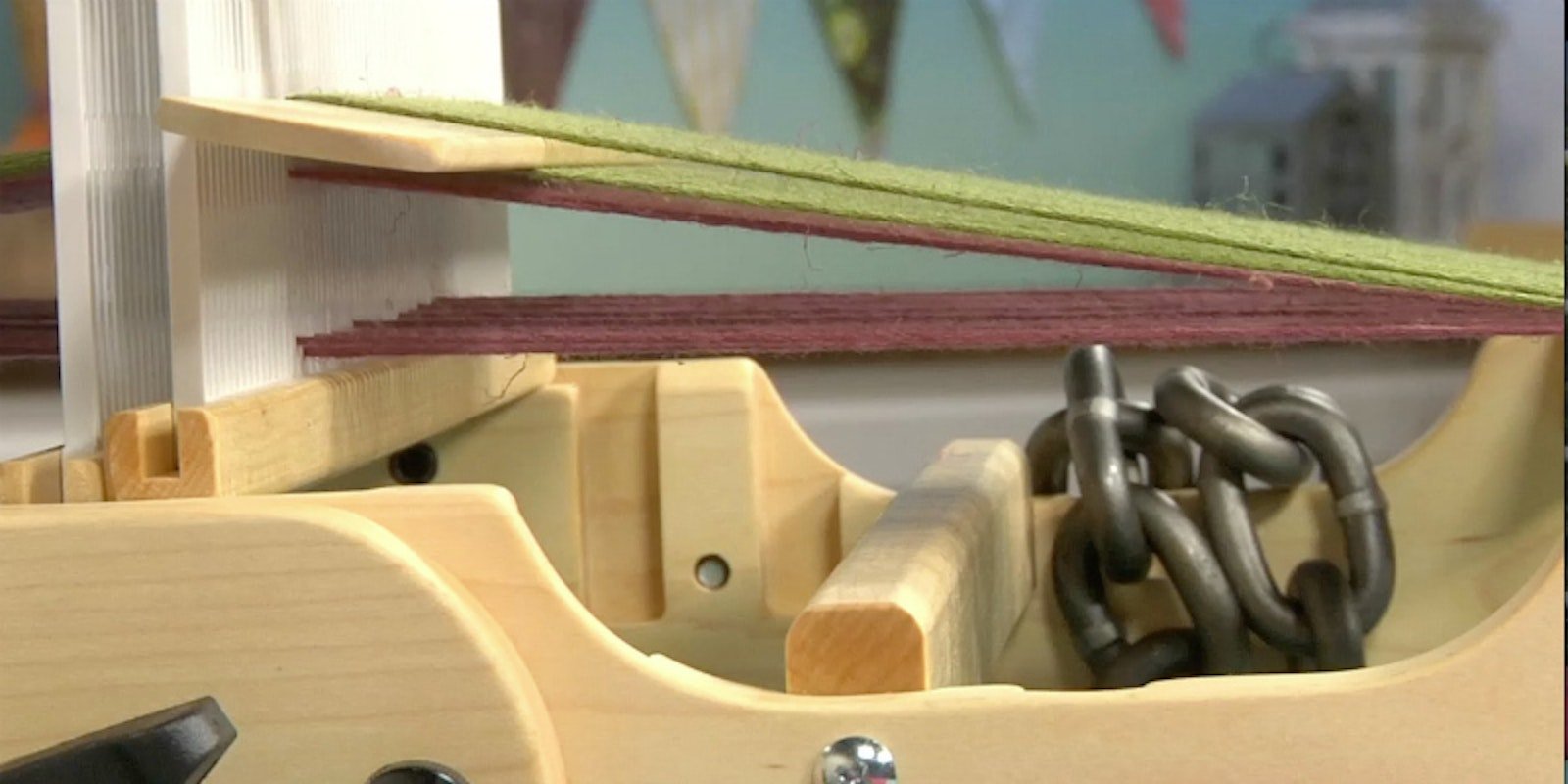You may think of a rigid-heddle loom as a gateway drug, the loom that makes you fall in love with weaving but not your “forever loom.” It’s the loom you lend a friend to get her hooked. But you can add a second heddle and push the limits of rigid-heddle weaving, even creating twill and doubleweave on a rigid-heddle loom.
What if I told you that a weaving professional—someone who has made her living as a weaving instructor, author, and designer for decades—let go of her multishaft looms and doubled down on rigid-heddle weaving? Liz Gipson did just that. Armed with two heddles and a few pick-up sticks, Liz creates beautiful and complex cloth in her books and videos.
And what really gets her excited is doubleweave. “Doubleweave is magic,” she says. Rigid-heddle looms tend to be narrower than multishaft looms, which might make it seem like we’re limited to scarves. But here’s what you can make on a rigid-heddle loom with doubleweave:
- A one-piece blanket twice the width of your loom. Double Your Fun includes a pattern for a full-size baby blanket on a 15" loom—seamlessly!
- A bag that’s closed on the bottom and sides but open at the top—again, no seams!
- A piece of fabric that’s quilted right on the loom.
For Madelyn van der Hoogt, doubleweave was itself the gateway drug. “The best weave structure is doubleweave,” she says. “If I were allowed only one weave structure, I would pick doubleweave, no question. I became a weaver because of doubleweave, in fact.”
All this on a loom that starts at under $200, has only a few moving parts, packs up small for storage or transportation, and happily accepts a wide range of yarns? It may not be enough to make you pass on a multishaft loom, but don’t write off your rigid-heddle loom as just for plain scarves, either.
—Anne

